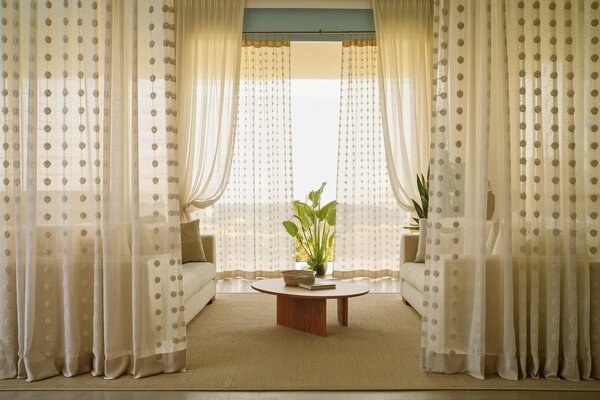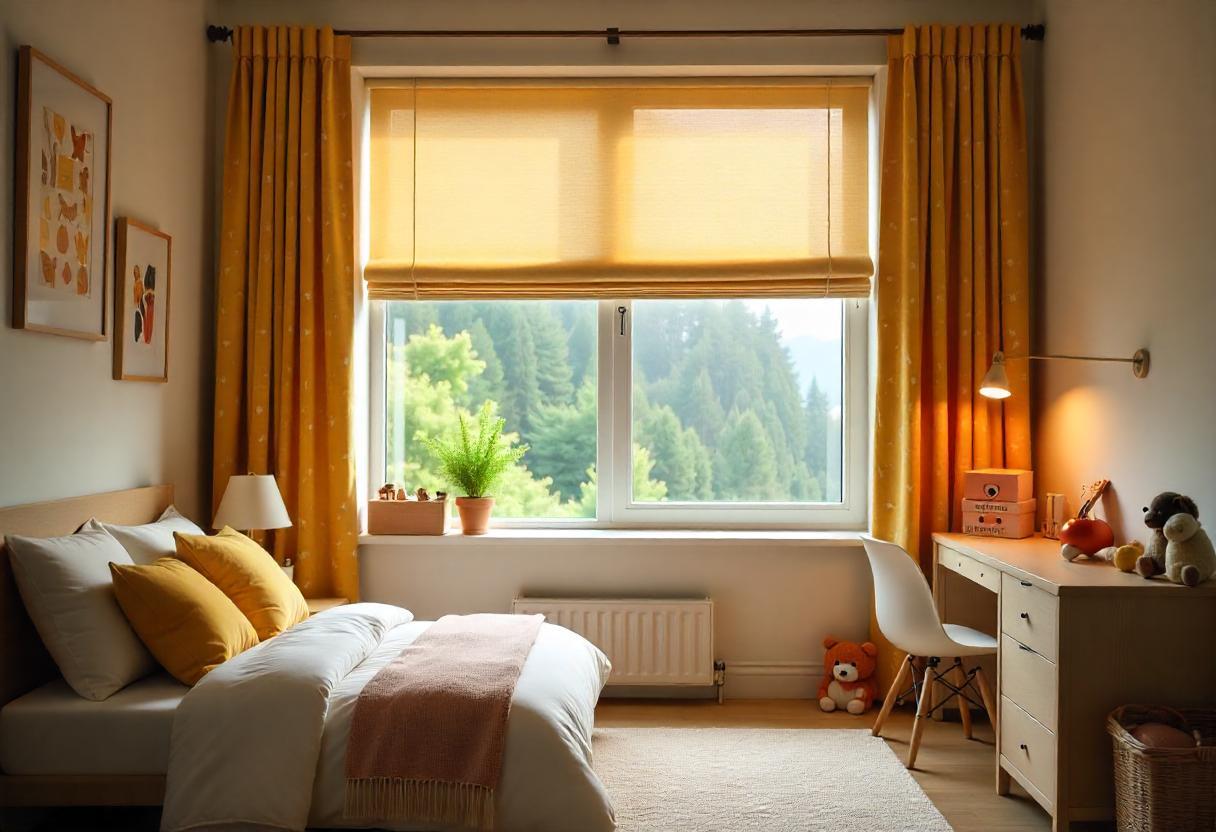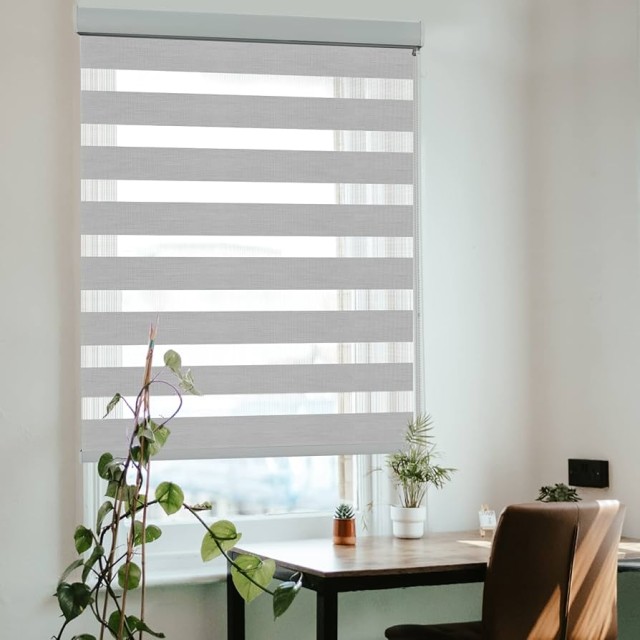
Light-Filtering Curtains vs. Blinds: Which Is Better?
Many people dwell between choosing Light-Filtering Curtains and blinds. We have seen customers wondering whether to have both or just one style. Are you among them too? Well, then let us tell you, both have their own advantages. The best option depends on your needs, style, and how you want your space to feel. Let’s explore the differences to help you make the right choice.
1. Light-Filtering Curtains
a). Soft and Elegant Lighting
Light-filtering curtains are crafted from lightweight fabrics that gently spread sunlight throughout the room. They create a soft, warm glow, reducing glare without completely blocking light. This makes them ideal for spaces like living rooms or bedrooms where you want a relaxing atmosphere.
b). Design and Style
Curtains come in various colors, patterns, and textures. They can enhance your décor and serve as a focal point. You can layer them with heavier drapes to add style and functionality, giving you more control over light and privacy.
c). Installation and Maintenance
Curtains are easy to install with just a curtain rod and brackets. They require regular washing or dry cleaning, depending on the fabric. If you prefer a low-maintenance option, consider this factor.
d). Privacy and Insulation
If we talk about privacy, curtains offer moderate privacy. You will have enough light, but a partial view to nature's serenity. They also help with insulation, keeping the room warmer in winter and cooler in summer.
2. Light-Filtering Blinds
a). Precise Light Control
Light-filtering blinds, such as Venetian or roller blinds, allow you to control the amount of light entering your room. You can tilt or raise them to adjust the light levels. This is especially useful for spaces where you need light throughout the day, like a home office.
b). Minimalist Design
Blinds usually have a sleek, modern appearance. They come in various materials, including wood, faux wood, and aluminum, which can complement your interior design. Blinds can also be paired with curtains for added style and functionality.
c). Easy Operation and Maintenance
Blinds are easy to operate with cords, wands, or motorized controls. They are generally low-maintenance, needing only occasional dusting or wiping. This makes them a practical choice for busy households.
d). Privacy and Space-Saving
Blinds offer better privacy than light-filtering curtains, especially when fully closed. They also save space since they fit within the window frame, making them ideal for small rooms or limited window space.
Which Is Better for You?
The choice between light-filtering curtains and blinds depends on what you value most:
- If you prefer soft, diffused light and an elegant appearance, curtains might be the right choice.
- If you want more control over light levels and a minimalist design, blinds are likely the better option.
Both can enhance your living space by letting in natural light while providing various levels of privacy and style. Think about what suits your style and needs best.
5 Tips for Combining Blinds with Curtains
1. Layer for Flexibility
Layering blinds with curtains allows for flexible light and privacy control. Use blinds to adjust light levels and add curtains for a soft, decorative touch. Choose a curtain rod that extends beyond the window frame so the curtains can fully cover the blinds when needed.
2. Coordinate Colors and Patterns
To create a cohesive look, match or complement the colors and patterns of your blinds and curtains. Opt for complementary shades to ensure they work well together. For balance, choose a neutral color for the blinds and a patterned curtain or vice versa.
3. Choose Complementary Textures
Mixing textures adds depth to your window treatments. Combine sleek, modern blinds with soft, flowing curtains for a contrasting look that adds visual interest. For example, pair wood or metal blinds with heavy, luxurious drapes for an elegant touch.
4. Use Curtains to Frame the Blinds
Curtains can frame and enhance the appearance of your blinds. Hang the curtains higher than the window frame to create a taller look. Ensure the curtains are wide enough to cover the entire window when closed for a polished, complete look.
5. Opt for Functional Designs
Select curtain styles that match the functionality of your blinds. For example, if you use blinds for light control during the day, choose curtains that add warmth and style for evening use. Consider sheer curtains for daytime light and heavier drapes for nighttime privacy.
Combining blinds and curtains thoughtfully can give you a stylish and versatile window treatment solution that meets your needs for light control, privacy, and aesthetic appeal.
Pro Tip: Combine blinds and curtains for large windows or glass doors (like patio doors) to get the best of both worlds.
Putting It All Together
As discussed, both light-filtering curtains and blinds have unique benefits. Curtains add warmth and style, while blinds offer control and practicality. Consider the atmosphere you want to create, your maintenance preferences, and the level of light and privacy you need. With this guide, you can make a well-informed decision and choose the best window treatment for your home.




